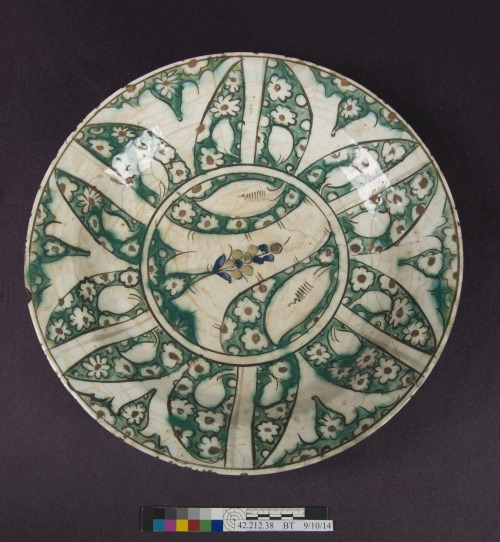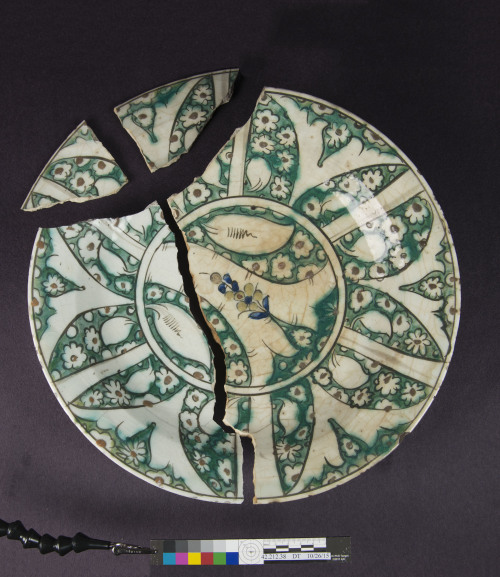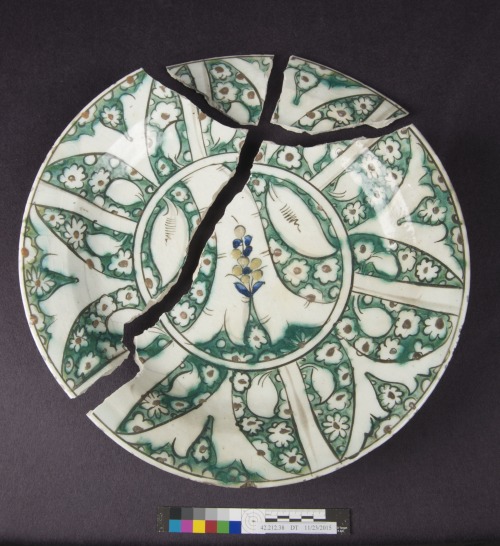During an object’s use or as a result of archaeological burial, objects, particularly ceramics can b
During an object’s use or as a result of archaeological burial, objects, particularly ceramics can become stained. These stains such as the red-brown ones see on this early 17th century Islamic plate can be distracting from the overall design and beauty of an object. In this case, the object had been previously repaired using an inappropriate and now failing adhesive. This was removed using solvents which allowed the full extent of the staining to be assessed. The stains had settled into the fine cracks within the glazed surface and the break edges which highlighted the breaks making them distracting to the overall object.Conservators use a variety of materials to reduce or remove staining from objects, but the most successful method involves the use of a poultice. Most people will be familiar with the use of poultices in medicine, for example, to apply medication to a wound. In conservation, the use is similar: a poultice can be made of a wide variety of materials and is saturated with a solution tested to mobilize the stain within the ceramic. The poultice holds the solution on the surface of the object and allows it to penetrate into the body of the ceramic. As the poultice dries, it re-absorbs the solution and pulls the stain from the ceramic into the poultice material. Using such a system can be effective, but it can also cause further staining to the object and is risky because the poultice obscures the surface of the object so the conservator cannot see whether the treatment is effective or is causing more damage. The above example shows multiple steps in a successful stain reduction treatment.Posted by Kate Fugett -- source link
Tumblr Blog : brooklynmuseum.tumblr.com
#bkmmiddleeastart#bkmconservation#conservation#art#art conseration#science#conservators#material#stain#cleaning#poultice#solution#surface#ceramic#treatment#plate#adhesive#cracks#crack#glaze#highlight



